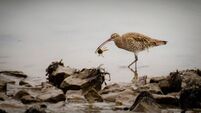Old cures... hocus pocus or hidden treasures?

The foxglove was especially valued as a herb for curing ailments in man and beast.
When most people hear of old cures, they frequently raise their eyes to heaven and dismiss them instantly. In the face of modern medicine, it is difficult to believe they have any value but I’d like to think they are, at least, worth a visit. Let’s see if any of these old cures, that served our ancestors so well for so long, still have a place.
One thing is for sure, when it comes to old cures, the people who depended on them often had little else to help them deal with sickness and disease. In the past, a mixture of prayer, blind belief and everyday ingredients was all many rural people had.
Today’s billion-dollar pharmaceutical industry began back in the 19th century, around the time of the Industrial Revolution, and heralded a major turning point due to advances in organic chemistry. Chloral hydrate became the first synthetic drug, discovered in 1869 and used as a sedative, while Aspirin, the first 'wonder drug', was created by chemically modifying salicylic acid (found in willow bark).
The first ancient remedies were documented on Mesopotamian clay tablets around 2400 BC. While humans have been curing themselves with tried and tested cures for thousands of years, their old cures have been relegated to the status of folk remedies in the face of modern alternatives. As a result, much of their true value has been lost. Early references to healing are found in ancient religious texts, such as the Bible, and in the practice of shamanism, which dates back tens of thousands of years.
In general, a Shaman is a spiritual intermediary who enters the supernatural world to treat illness. Shamanism is still practiced across many cultures to this day, including those in Siberia, South America, Africa, and Australia. The Celtic druid was a healer who combined herbal medicine with spiritual rituals, seeing illness as potentially caused by the gods' displeasure. They used herbs, sacred waters, and ointments in the performance of certain rituals to achieve healing results. An example of an ancient Irish druid healer was Dian Cécht (the healer for the Tuatha Dé Dananna), a god from mythology known for his healing abilities, particularly his ability to restore the wounded by using a healing well.
For millennia, cures and the ability to heal was left in the hands of wise and learned people. In ancient Ireland, the druid held an exclusive position in society; such a position was second only to kingliness. As the centuries passed the role of the druid faded but much of his magic and healing ability was handed down. These gifts fell into the hands of ordinary people and in the absence of any other form of medication, held their place in society. Many of the cures retained an element of the supernatural but most contained defined ingredients, usually gathered in nature. Trees, herbs, and the use of everyday food items were common to many cures.
A 2020 book, , by Irish historian, Marion McGarry, explains the link with ancient times and how many of the cure that served our ancestors so well were passed down.
Although Christian, the majority of rural people kept old pagan superstitions in their daily lives. Despite there being no scientific evidence, many experienced relief from illnesses and ailments by way of folk cures and holy well rituals. Despite the overall waning of folk medicine in favour of conventional medicine, some remnants live on: those who have ‘the cure’ are still sought out in Ireland.
McGarry goes on to tell us that in the old days, at a time without the understanding of science that we have today, people tended to blame illness on invisible outside forces; bad luck, or on enemies who wished them harm. To cope, they had folk cures alongside any conventional medical treatments of the day.
A bean feasta, or wise woman, was associated with aspects of herbal medicine or ‘cures’ for minor diseases and upsets, but her powers were seen as innate rather than learned. These women were once highly respected in rural communities.
Other people were known to have ‘cures’ or ‘the cure’ for certain diseases and had been deemed to have such powers by virtue of their birth. The seventh son, for example, would have a cure. So too, could the posthumous child, the child born after its father’s death. Some ‘inherited’ their cure from a parent or relative, where the cure was transmitted, usually from a male to a female and vice versa. Others gained their healing powers through ritual; one example of this is a person who licked a lizard (newt) to get the cure of the burn. Actually, I have completed this ritual myself but, strangely enough, most people have declined my willingness to lick them!
Septic sores were treated with poultices, some made from bread soaked in water or grated potatoes, while herbal poultices were also made. Moss and cobwebs were used to treat wounds and cobwebs were thought effective in stopping bleeding. Beaten eggs and honey were given for coughs. A crude form of penicillin was made before the drug was formally known, by using mould that had grown on foodstuffs such as butter. We can see some science attached to these cures, proof that they had substance, albeit ill-defined.
Buttermilk and butter were soothing in the treatment of scalds and burns. The availability of bread soda and Epsom salts in the 19th century marked a turning point in home cures, as these two ingredients could be used for almost anything: stomach upsets, soothing aching muscles, cleaning teeth, even curing livestock. McGarry also details the value of herbs in curing ailments in both man and beast.
The need to have cures for livestock, particularly cattle, extends back to our early farmers and their dire need to keep their herds healthy. Cattle, after all, were not just food producing, they were currency, a measure of wealth. Cows were blessed while pregnant; a blessed candle was used to singe hair around a heifer's udder before she had her first calf. This was very likely an Christian version of the pagan ritual of galloping cattle through fire at Lughnasa.
Take them of leave them, folk remedies and old cures have a certain charm. Some of them were purely based on faith while others contained elements that still stand up today. I imagine, if nothing else, they prove that the power of prayer, mixed with natural ingredients, goes a long way in dealing with most of life’s ills.






